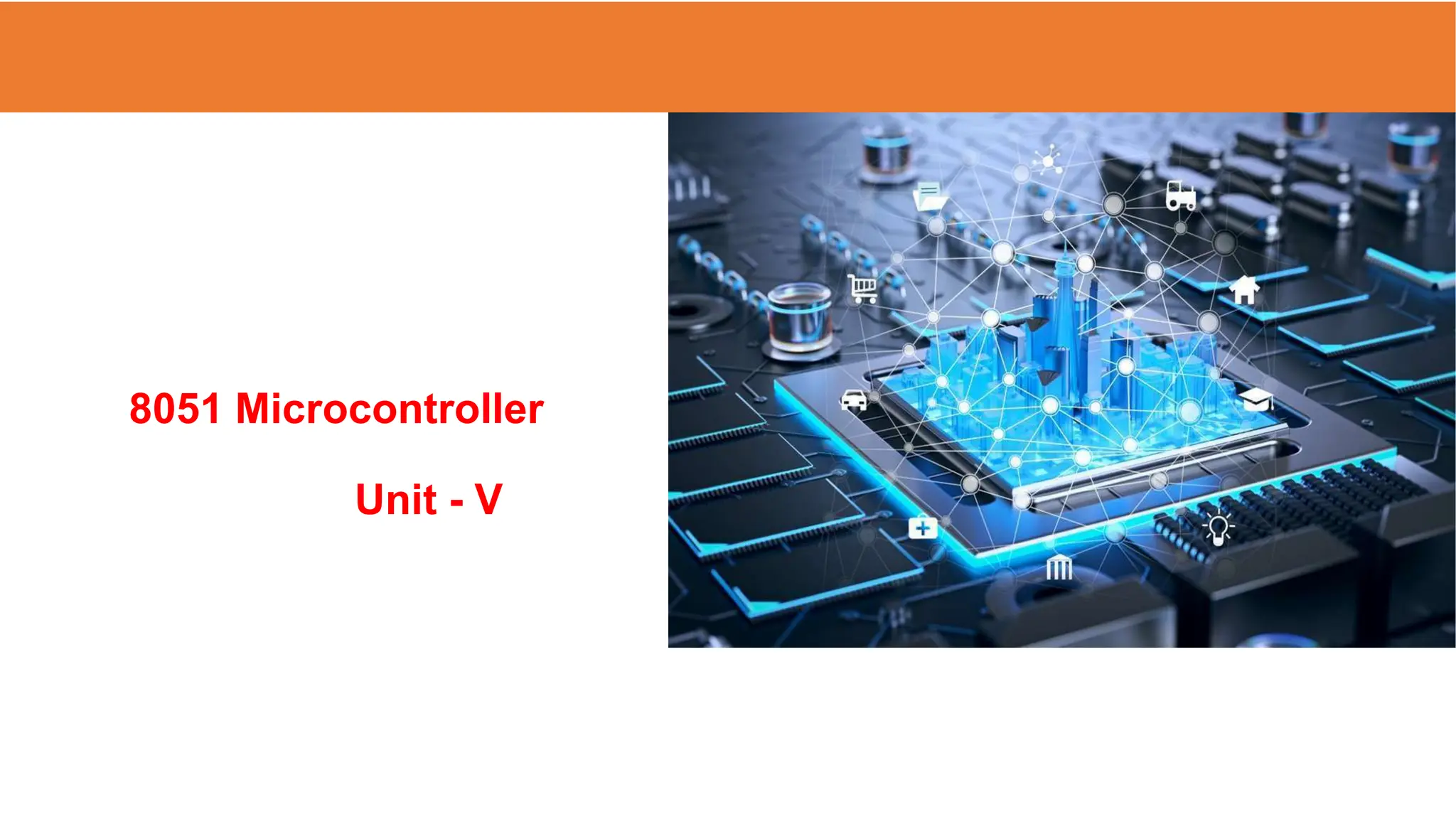The document provides information on the architecture of the 8051 microcontroller. It discusses the 8051's features such as its 8-bit CPU, 16-bit program counter and data pointer, 8-bit registers including the program status word and stack pointer. It describes the 8051's memory including 4K of on-chip ROM and 128 bytes of RAM. It outlines the ALU, accumulator, instruction decoder and control unit. It also discusses the 8051's registers, addressing modes, timers/counters and serial port, and types of instructions.
































